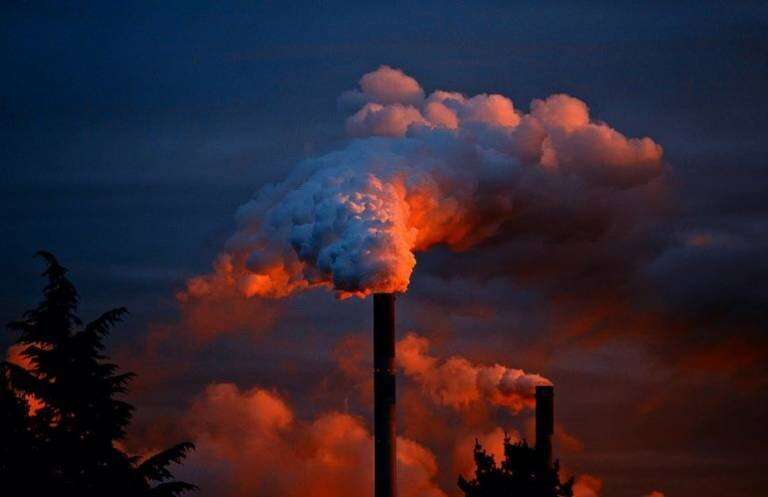Fossil fuel air pollution responsible for one in five deaths worldwide
An estimated one in five deaths (18 to 21.5%) every year can be attributed to fossil fuel pollution, a figure much higher than previously thought, according to research co-authored by UCL.
The study shows that more than 8 million people around the globe die each year as a result of breathing in air containing particles from burning fuels like coal, petrol and diesel, which aggravate respiratory conditions like asthma and can lead to lung cancer, coronary heart disease, strokes and early death.
The research, led by Harvard University in collaboration with UCL, the University of Birmingham and the University of Leicester has been published in the journal Environment Research.
Co-author and UCL Associate Professor Eloise Marais (UCL Geography) said: "Burning fossil fuels produces fine particles laden with toxins that are small enough to penetrate deep into the lungs. The risks of inhaling these particles, known as PM2.5, are well documented.
"Our study adds to the mounting evidence that air pollution from ongoing dependence on fossil fuels is detrimental to global health. We can't in good conscience continue to rely on fossil fuels, when we know that there are such severe effects on health and viable, cleaner alternatives."
Regions with the highest concentrations of fossil fuel-related air pollution, including Eastern North America, Europe, and South-East Asia, have the highest rates of mortality.
Until now, the Global Burden of Disease Study, which is the largest and most comprehensive study on the causes of global mortality, put the total number of deaths each year from all outdoor airborne particulate matter (including dust and smoke from wildfires and agricultural fires) at 4.2 million people.
This study, based on data representative of conditions in 2018, calculates that fossil fuel emissions alone account for 8.7 million people's deaths.
Previous research relied on satellite and surface observations to estimate the average global annual concentrations of PM2.5 airborne particles. But satellite and surface observations cannot distinguish between particles from fossil fuel emissions and those from dust, wildfire smoke or other sources.
Loretta J. Mickley, senior research fellow in chemistry-climate interactions at the Harvard John A. Paulson School of Engineering and Applied Sciences (SEAS), and co-author of the study, explains: "With satellite data, you're seeing only pieces of the puzzle. It is challenging for satellites to distinguish between types of particles, and there can be gaps in the data.
To overcome this challenge, researchers turned to GEOS-Chem, a global 3-D model of atmospheric chemistry developed at SEAS. It has high spatial resolution, meaning researchers could divide the globe into a grid with boxes as small as 50 km x 60 km and look at pollution levels in each box individually.
Karn Vohra, a graduate student at University of Birmingham and first author of the study, who is advised by UCL's Eloise Marais, explains further: "Rather than rely on averages spread across large regions, we wanted to map where the pollution is and where people live, so we could know more exactly what people are breathing."
To model PM2.5 generated by fossil fuel combustion, the researchers plugged into GEOS-Chem estimates of emissions from multiple sectors, including power, industry, ships, aircraft and ground transportation and simulated detailed oxidant-aerosol chemistry driven by meteorology from the NASA Global Modeling and Assimilation Office.
Once they had the concentration of outdoor fossil-fuel PM2.5 for each grid box, the researchers needed to work out how those levels impacted human health.
While it's been known for decades that airborne particles are a danger to public health, there have been few epidemiological studies to quantify the health impacts at very high levels of exposure, such as those found in China or India.
Previous research converted health risks of indoor second-hand smoke exposures to estimate the risks of outdoor PM2.5 at these high levels. However, recent studies from Asia have found that this approach substantially underestimates the risk posed by high concentrations of outdoor air pollution.
To rectify this, scientists at Harvard developed a new risk assessment model that linked the concentration levels of particulates from fossil fuel emissions to health outcomes.
This new model found a higher mortality rate for long-term exposure to fossil fuel emissions, including at lower concentrations. The researchers found that, globally, exposure to particulate matter from fossil fuel emissions accounted for 21.5 percent of total deaths in 2012, falling to 18% in 2018 due to tightening air quality measures in China.
Much of the debate on climate change focuses on greenhouse gases, in particular CO2. The authors of this study hope the findings will instill a greater sense of urgency in policy makers and others to switch to alternative energy sources and prevent many more millions of needless deaths.
More information: Alina Vodonos Zilberg et al. Global Mortality from Outdoor Fine Particle Pollution Generated by Fossil Fuel Combustion, ISEE Conference Abstracts (2019). DOI: 10.1289/isesisee.2018.P03.2000



















